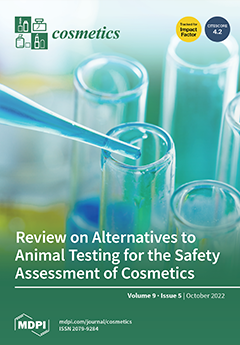Open AccessReview
A Mini Review: The Application of Eupatorium Plants as Potential Cosmetic Ingredients
by
Agmi Sinta Putri, Muhammad Taufiq Haqiqi, Supomo, Irawan Wijaya Kusuma, Harlinda Kuspradini, Enih Rosamah, Rudianto Amirta, Swandari Paramita, Rico Ramadhan, Muhammad Adly Rahandi Lubis, Harits Atika Ariyanta, Aswandi Aswandi, Cut Rizlani Kholibrina, Maya Ismayati, Widya Fatriasari, Didi Tarmadi, Yuliansyah, Wiwin Suwinarti, Yong-ung Kim and Enos Tangke Arung
Cited by 1 | Viewed by 4145
Abstract
The Eupatorium plant has been well used in medication and as a decorative plant. Some studies have reported that this herb has biochemical compounds, such as sesquiterpenes, phenolics, polysaccharides, and pyrrolizidine alkaloids. Thus, it has pharmacological effects, including antifungal, antibacterial, cytotoxic, and antinociceptive
[...] Read more.
The Eupatorium plant has been well used in medication and as a decorative plant. Some studies have reported that this herb has biochemical compounds, such as sesquiterpenes, phenolics, polysaccharides, and pyrrolizidine alkaloids. Thus, it has pharmacological effects, including antifungal, antibacterial, cytotoxic, and antinociceptive properties, that can be utilized for cosmetic purposes. However, only a few published works have summarized the active compounds and the application of Eupatorium plants as cosmetic agents. Therefore, this article aims to review the application of Eupatorium plants as a potential cosmetic agent. The active compounds of Eupatorium are contained in the whole plant, as well as the stems, leaves, roots, and aerial parts (flower, fruit, and seeds). In terms of cosmetic applications, the activities of
Eupathorium are antioxidant, anti-tyrosinase, anti-melanin/melanogenesis, anti-acne, and anti-inflammatory. This review aims to contribute to a better understanding for expanding the utilization of this plant for cosmetic purposes by using these active compounds.
Full article





